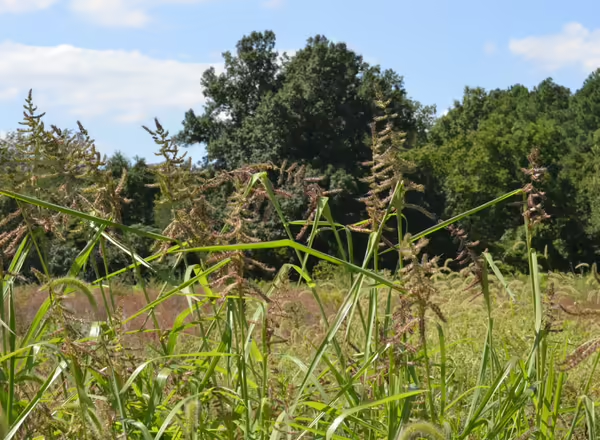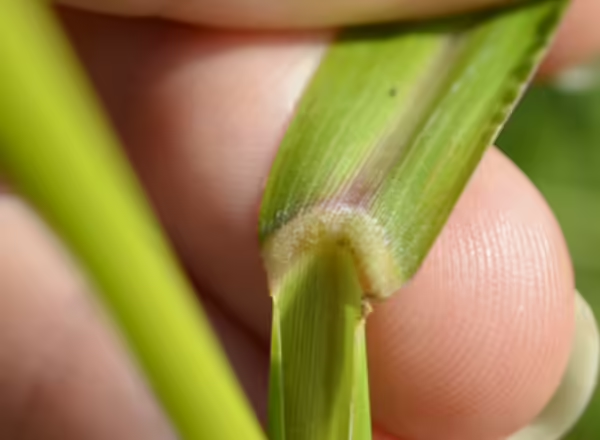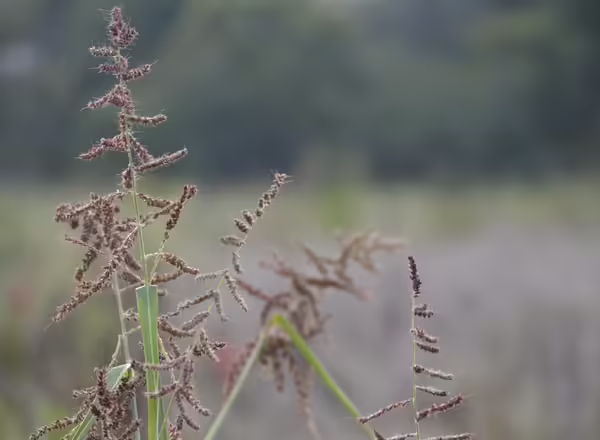Barnyard Grass, Echinochloa muricata, is a native, summer annual found in every county in Illinois, typically in disturbed habitats or wetter areas. This grass is often planted as a food source for waterfowl in wetland areas.
Key identification features
Barnyard Grass typically grows between 3-4 feet tall. Its leaves are broad and long with a midrib or central vein that looks silver, clear, or translucent in color, but can have a touch of pink at the base of the leaf blade. This grass does not have a ligule - at the base of the leaf blade where the blade becomes the sheath and wraps around the stem, there is a raised surface that is smooth, without a membrane or any hairs. This is one of the easiest ways to tell this grass apart from others, since most grasses have a ligule.
Barnyard Grass produces a panicle inflorescence, which means it has branches along it, giving it a pyramidal shape. The branches are spaced apart from one another, rather than packed together densely. The branches themselves are covered with densely packed spikelets, the flowering units of the grass. The spikelets can range from green to bright red in color, and they are pear-shaped and covered in soft hairs.
There are several varieties of this grass that can be distinguished from one another by the presence or absence of awns, bristle-like structures that grow out of the tip of the spikelets. Some varieties are awned while others are awnless.
Multiple types of Barnyard Grass
There are 5 different species of Echinochloa in Illinois, 2 native and 3 non-native. Of the two native species, one is found in every county in Illinois, Echinochloa muricata. It can also be referred to as Wild Millet. There are three different varieties of this species, which have small differences in the details of their spikelets and the presence or absence of awns.
The other most commonly found Barnyard Grass in Illinois is Echinochloa crus-galli, which is not native to Illinois. This one can be distinguished from E. muricata by looking at the rachis (or stem) of the inflorescence (or flowering cluster). In the native E. muricata, the rachis is smooth, while in the non-native E. crus-galli, the rachis has bristly hairs along it.
Need a refresher on grass identification terms, like ligule and spikelet? Check out this blog post!





Barnyard Grass, Echinochloa muricata, is a native summer annual found in every county in Illinois, typically in disturbed habitats or wetter areas. The leaves are rather broad, and this grass is unique because it does not have a ligule. Instead of a membrane or...